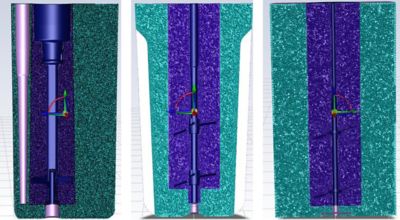Case Study
-
-
Accédez au logiciel étudiant gratuit
Ansys donne les moyens à la prochaine génération d'ingénieurs
Les étudiants ont accès gratuitement à un logiciel de simulation de classe mondiale.
-
Connectez-vous avec Ansys maintenant !
Concevez votre avenir
Connectez-vous à Ansys pour découvrir comment la simulation peut alimenter votre prochaine percée.
Pays et régions
Espace client
Support
Communautés partenaires
Contacter le service commercial
Pour les États-Unis et le Canada
S'inscrire
Essais gratuits
Produits & Services
Apprendre
À propos d'Ansys
Back
Produits & Services
Back
Apprendre
Ansys donne les moyens à la prochaine génération d'ingénieurs
Les étudiants ont accès gratuitement à un logiciel de simulation de classe mondiale.
Back
À propos d'Ansys
Concevez votre avenir
Connectez-vous à Ansys pour découvrir comment la simulation peut alimenter votre prochaine percée.
Espace client
Support
Communautés partenaires
Contacter le service commercial
Pour les États-Unis et le Canada
S'inscrire
Essais gratuits
“There’s a lot of internal expertise with Ansys Fluent. With Fluent, we can understand oxygen transfer at different operating conditions and tank geometries, and with the ROM technology we can get fast models from CFD data.”
— Luisa Attfield, Associate Data Scientist, GSK
GSK Drug Substance Development (DSD) is responsible for the generation of commercial, clonal cell lines; the development of a scalable, robust, and efficient upstream and downstream processes; and the transfer of these processes to commercial manufacturing scale. The cell lines are developed using small-scale bioreactors and then scaled up to large batch production. While the DSD team uses predictive modeling to control production processes, it is still nearly impossible to account for every single parameter. Cell line and bioreactor conditions need to be scaled correctly or the cells production rates will be less than optimal, which would require the DSD team to start production over again.
Challenges
GSK’s DSD team needed to overcome the inconsistencies observed in the performance of their processes and cell lines between different bioreactor scales. They select their cell lines in an Ambr15 bioreactor, but eventually these need scaled up to 2,000-liter bioreactors. Biological processes scale unpredictably; not only do they have to account for the differences between the bioreactor sizes, but they must also consider the cells’ sensitivity to changes. Predictive models developed at small scale require additional (often expensive) testing to calibrate for larger scales, and detailed vessel models may require proprietary third-party data. The DSD team also needed their solution to transfer code from the cell culture bioreactor model from gPROMS, the software on which it was developed.

The CFD and reduced order models were used in creating (left to right) Ambr 15, Ambr 250, and Sartorius 2000L STR bioreactors.
Engineering Solutions
The DSD team used Ansys Fluent to model the hydrodynamic profiles in GSK’s bioreactors and in different conditions using computational fluid dynamics (CFD). The CFD-based investigation was critical for achieving better scale-down models of the large-scale bioreactors, therefore enabling less expensive and more efficient experimentation for progressing biopharmaceutical assets through the pipeline. The DSD team used CFD models to create static reduced-order models (ROMs) to predict selected outputs at each scale, primarily the mass transfer coefficient (kLa). The ROMs acted as virtual sensors that provided inputs to the cell compartment model, created with the Modelica language.
The ROMs and cell compartment model were linked in a system model created in Ansys Twin Builder and exported as a digital twin runtime. Ansys Twin Deployer was used to convert these into a scaffolding Python command line application that connected to an industrial internet of things (IIoT) platform. It was important to transfer the code for the cell culture bioreactor model from gPROMS to Modelica to enable the deployment of the L1 digital twin. For that reason, Ansys engineers developed a Python code that translates the gPROMS code to a language that is compatible with Fluent. This is critical because it enables a seamless translation of future changes that GSK might apply in the gPROMS model to the Modelica language.
Benefits
- The CFD and reduced order models created Ambr 15, Ambr 250, and Sartorius 2000L STR bioreactors.
- The gPROMS cell model was converted to Modelica with good agreement.
- Combined ROM and cell models were compiled and exported as a twin model.
- A template runtime app was created and modified to illustrate deployment.
Commençons
Si vous êtes confronté à des défis d'ingénierie, notre équipe est là pour vous aider. Forts de notre expérience et de notre engagement en faveur de l'innovation, nous vous invitons à nous contacter. Collaborons pour transformer vos obstacles techniques en opportunités de croissance et de réussite. Contactez-nous dès aujourd'hui pour entamer la conversation.